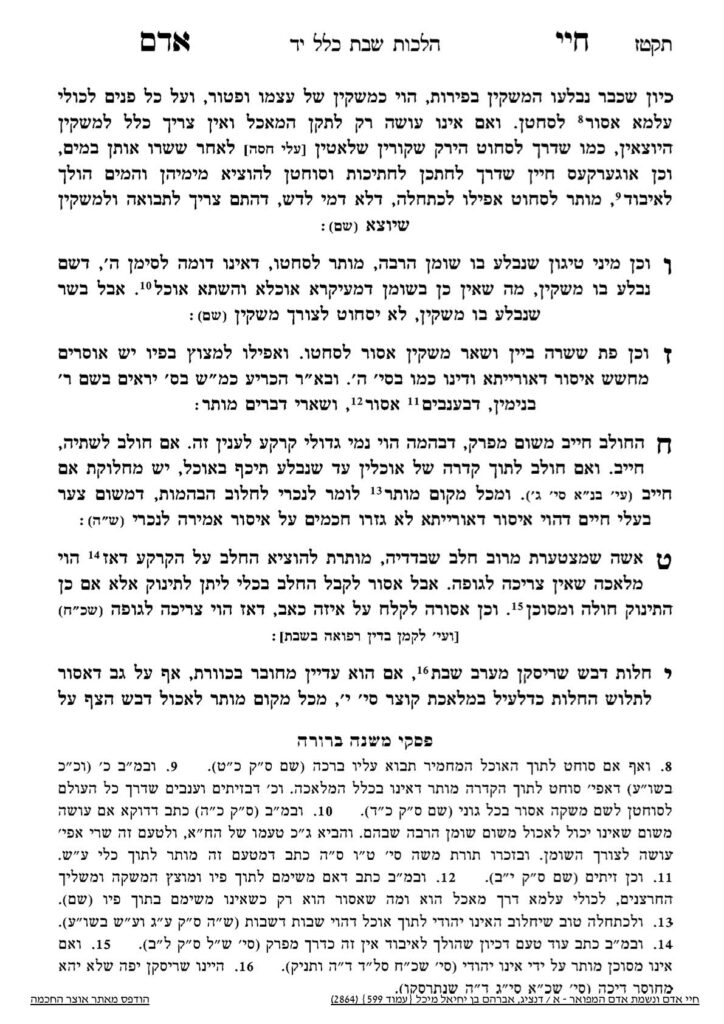Sponsorships for the upcoming Klalim, which discuss the 39 melachos of Shabbos, are available. Please contact Rabbi Reingold for more information at rabbireingold@gmail.com or 301.996.5910
We are continuing in siman 8, discussing choleiv (milking), which is a toldah of dosh. We left off discussing whether mashkeh haba’ah laochel would apply to milking. There are two possible methods to disucss:
- If the milk comes lesakein es haochel, to improve the food in some way. In this manner, it is similar to squeezing lemon on fish, in that the lemon truly improves the fish in some way. As long as the food is improved by the milk, it is muttar to express the milk directly onto the food. This is muttar even if the liquid is not fully absorbed
- If the food is not benefited by the milk, but the purpose of the food is merely as a pretense to extract the milk. An example would include placing a piece of bread inside a bucket before using the bucket for milking. In this case, it is only muttar if the vast majority of the liquid is absorbed, such that it can be considered that the liquid went directly into a food. If less than that is absorbed by the food, one cannot apply the rule of mashkeh ba laochel.
- The Chayei Adam holds mashkeh ba la’ochel is not a heter for milking. However, one may ask a non-Jew to milk the cow.



